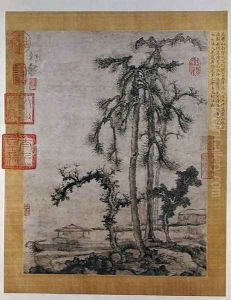Cao Zhibo Paintings
Cao Zhibo was a Chinese landscape painter who lived during the Yuan dynasty, a period that spanned from 1271 to 1368. He was born in 1272 and passed away in 1355. Cao Zhibo was known for his traditional Chinese shan shui (mountain-water) style of painting, which emphasized the spiritual and natural beauty of landscapes. His work is characterized by the use of brush and ink to create scenes that are simultaneously detailed and impressionistic.
Cao Zhibo's life and career were significantly influenced by the political context of his time. The Yuan dynasty was established by the Mongol Empire, which meant that the ruling class was of non-Han Chinese origin. During this period, many Chinese literati and artists faced challenges in gaining official positions or recognition from the Mongol rulers. As a result, many turned to the arts as a means of personal expression and intellectual fulfillment.
Despite the difficulties of the times, Cao Zhibo managed to achieve a certain level of success. He was recognized for his skill and became well-regarded among his contemporaries. His paintings often depicted the rugged landscapes of China with a sense of solitude and introspection, reflecting the scholar-artist's mindset of the time. His style was somewhat conservative, drawing on the traditions of earlier Song and Tang dynasty masters like Dong Yuan and Juran.
Cao Zhibo's works are characterized by their strong compositions and the use of 'dry brush' techniques, which give his landscapes a sense of depth and texture. He was also adept at capturing the atmospheric effects of different seasons and times of day, contributing to the mood and emotional resonance of his paintings.
Today, Cao Zhibo is remembered as a significant figure in the history of Chinese art. His paintings are held in various museum collections, and he is studied for his contributions to the development of landscape painting in China. His legacy is that of an artist who upheld and advanced the classical traditions of Chinese painting during a time of great change and cultural upheaval.
